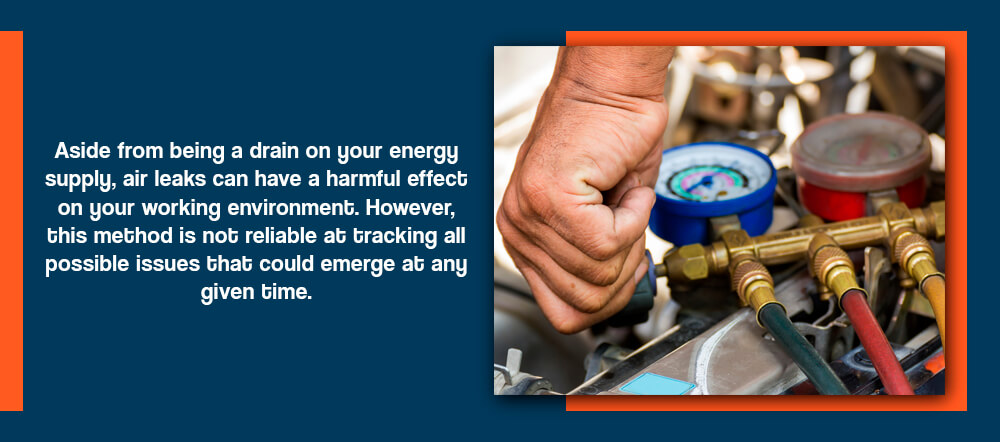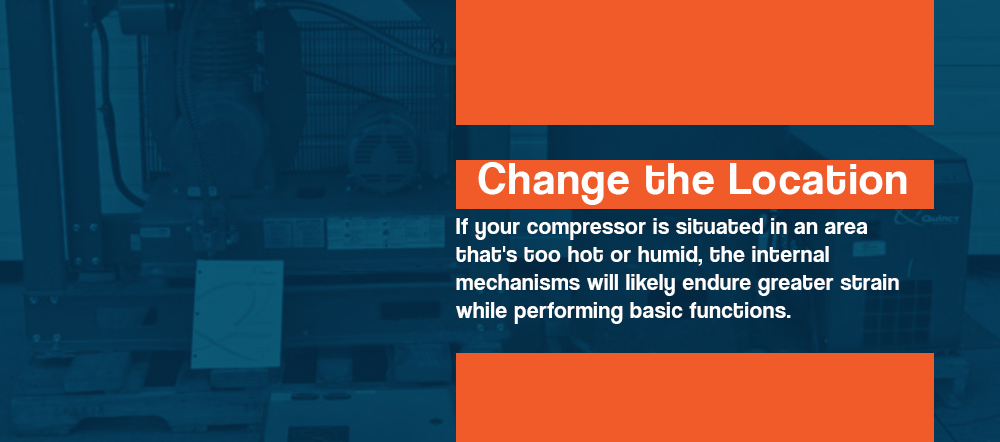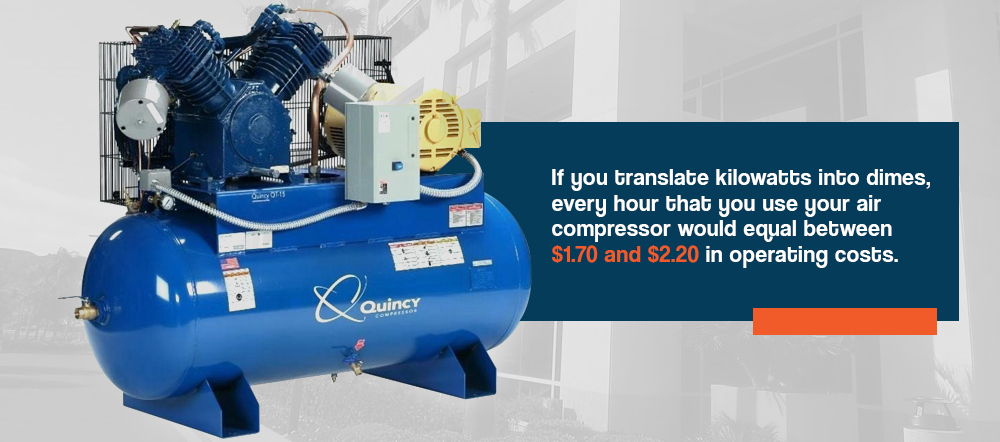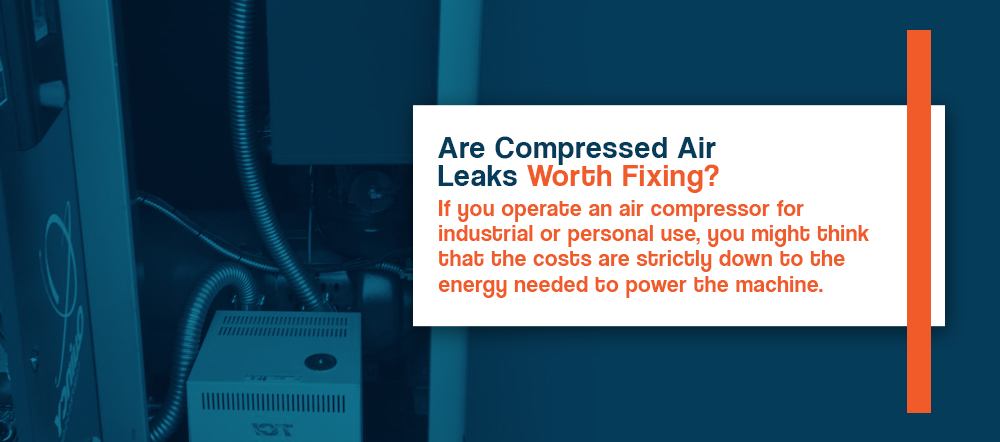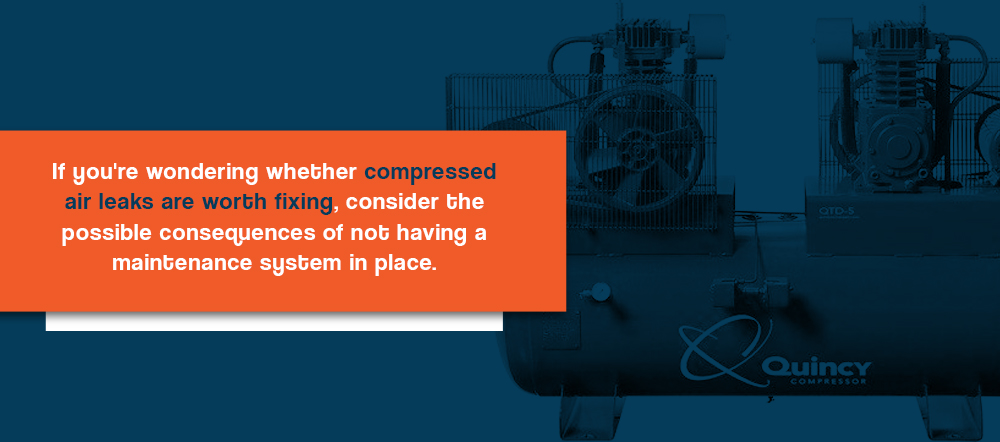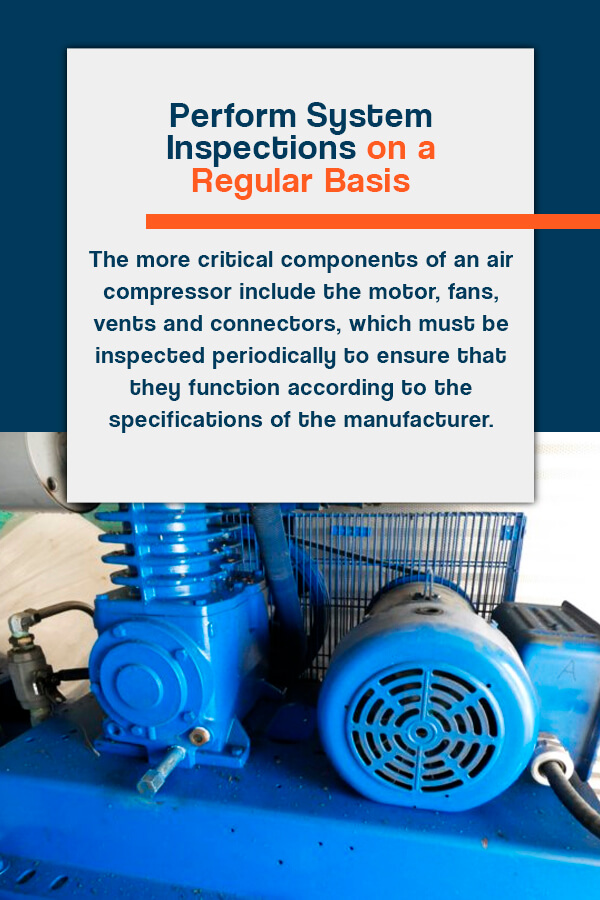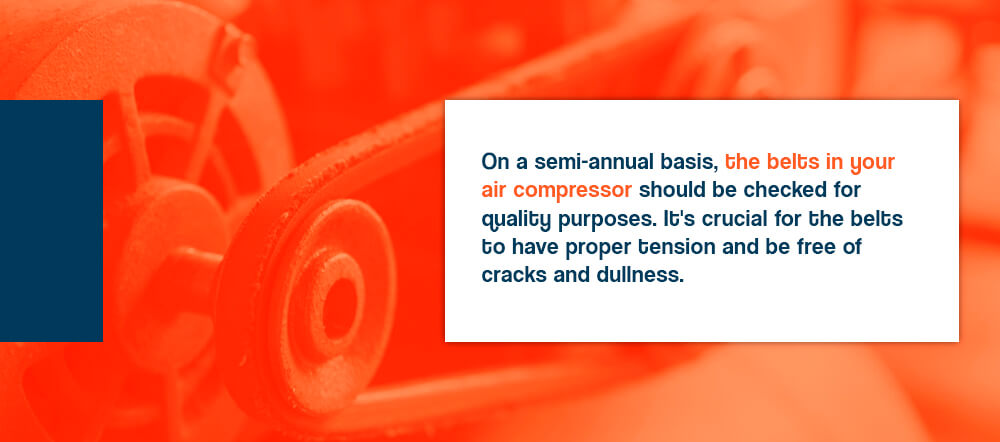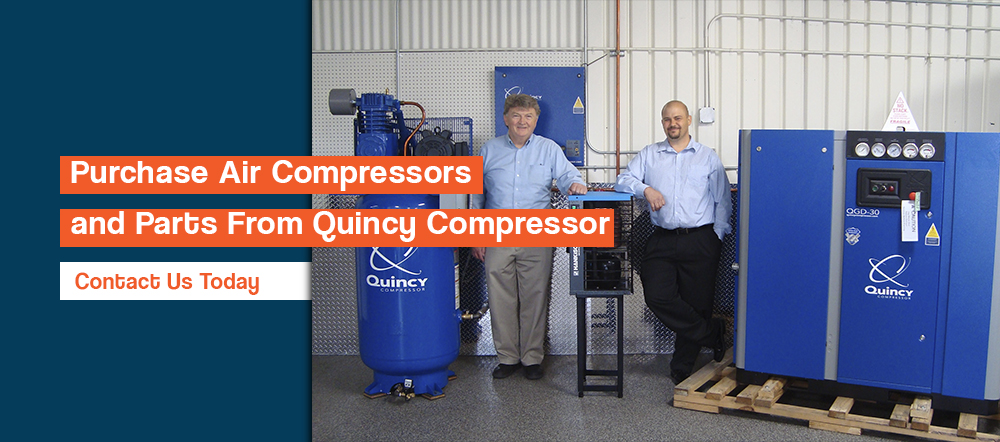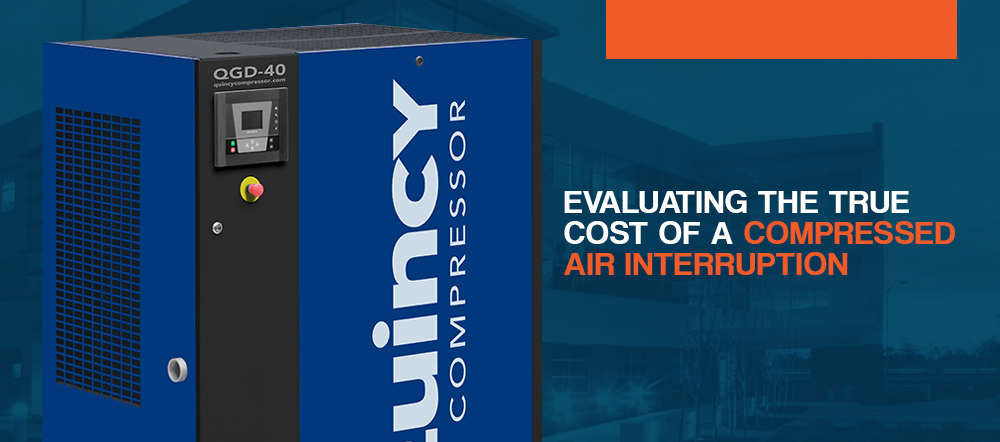
Compressed air is often referred to as the fourth utility in manufacturing. Despite its importance in a vast range of industrial processes, however, it’s largely misunderstood among many parties, including those who directly use compressors.
Depending on the type of facility, air compressors could be responsible for much more than a simple set of pneumatic tools. At pressing plants, compressed air is often the driving force between the motors and actuators that send automated machines into motion. Compressed air can also impact the quality of the products. At biogenetic facilities, for example, untold sums of research could go to waste if the controlled air becomes overly vaporized.
Regardless of the size or purpose of your air compressor, it’s crucial for you to understand how the mechanisms work so that you can pinpoint performance issues that could lead to costly problems. That way, you’ll be better equipped to evaluate the scope and cost of a compressed air interruption, such as a system leak.
Compressed Air System Leaks
Aside from being a drain on your energy supply, air leaks can have a harmful effect on your working environment. If excess amounts of pressurized air are allowed to leak and congest in the presence of your workforce, the situation could be unhealthy for anyone who works in close quarters with the air compressor(s).
At most large facilities, computers are typically used to monitor the performance of air compressors. However, this method is not reliable at tracking all possible issues that could emerge at any given time. For example, if a diaphragm tears in one of the control valves, the issue would not be manageable from a building or factory IT department.
If you operate one of these facilities, remember that it’s crucial to have on-the-ground leak inspections performed on each air compressor on a periodic basis. Inspections should either be performed by in-house technicians or by an outside firm that specializes in compressor analysis and maintenance. With the proper equipment and know-how, evaluating the cost of a compressed air interruption is easy to do and helpful to master.
What Is the Cost of Compressed Air Leaks?
In order to generate sufficient quantities of compressed air for a given set of industrial applications, the functions involved are generally costly due to the amount of energy consumed in the process. For every amount of pressurized air that you can get from an air compressor, the process requires roughly 10 times the energy.
While the compressor works to turn incoming air into pressurized airpower, the internal components generate vast amounts of heat, which in turn consumes most of the energy that powers the whole set of processes. Consequently, the energy that translates into pressurized airpower only accounts for between 10 and 15% of the overall energy consumption of the typical air compressor.
Even when you take into account the amount of energy that turns to heat in an air compressor, a lot of the pressurized air that does get produced never actually arrives at one of the end-point applications. On average, one-fourth of the compressed air that your machine produces will ultimately slip through the cracks of the system. In worst-case examples, only about one-fifth of the pressurized air will even make it to the pneumatic tools due to leaks within the machine and at various connecting points.
How Much Do Compressed Air Leaks Cost?
When you run an air compressor with a full load at 100 psi, the machine will use anywhere from 17 kW to 22 kW for every 100 cfm. If you translate kilowatts into dimes, every hour that you use your air compressor would equal between $1.70 and $2.20 in operating costs. At those rates, the cost of running the compressor would fall into the ballpark of $14,900 to $19,300 if you run the machine year-round, 24/7. Furthermore, those estimates do not account for the additional expenses that you would have to foot for compressor maintenance, new parts and other related costs.
The costs associated with running an air compressor will increase even further if the leakage quotient of your machine exceeds the typical 25%. For example, if 30% of the pressurized air escapes from the system with every 100 cfm, your operating costs could be as high as $25,000 per year if you run the machine nonstop, 24/7.
Granted, these cost figures would be significantly reduced if you run your air compressor at more select intervals, such as 12 hours per day, five days per week. Still, the high costs that you could easily incur due to air loss and inefficiency in your air compressor highlight the consequences of leaks in a compressed air system.
At small facilities, the financial impact of air leaks can be especially damaging due to limitations in the operating budget. If you make products in small quantities for a select market, you know that it’s crucial to maximize the efficiency of your air compressor because doing so will optimize productivity and increase your bottom line. It is therefore essential to have a compressed air audit to clarify the performance level of your system in its current condition.
In larger facilities, several compressors are often used simultaneously for a range of high-powered applications. At factories that have not been audited for leakage loss, an audit might ultimately uncover a number of wasteful practices. In addition to cutting costs and boosting profits, the engineers at large facilities sometimes discover that the second or third air compressor — originally purchased as a backup source — can be shut off once the leaks have been fixed on the main unit and its attachments.
Are Compressed Air Leaks Worth Fixing?
If you operate an air compressor for industrial or personal use, you might think that the costs are strictly down to the energy needed to power the machine. The truth of the matter is that the pressurized air coming out of the machine is money in and of itself. For every 1 hp of pressurized air that your compressor sends to an end-point application, 8 hp of electricity is needed to make that happen.
If your operations rely primarily on compressed air, the power used by your pneumatic processes could easily account for the largest portion of your energy consumption. If you do not have an effective system in place to manage leaks, the loss of pressurized air could cut your productivity in half. Plants that fail to institute anti-leak management typically lose between 30 and 50% of their compressed air production.
Am I Wasting Money Fixing Compressed Air Leaks?
If you’re wondering whether compressed air leaks are worth fixing, consider the possible consequences of not having a maintenance system in place. An air compressor that yields 200 hp will generally lose 60 hp to air leaks. When you translate the lost kWh to dimes, $44,000 of your annual energy bill is swallowed by air leakage.
To gain sufficient savings from air compressor maintenance, you need to make sure that the time, money and work involved are prudent for the issues at hand. For example, if your compressor leaks a fourth of each pressurized air supply, you could see significant savings as long as you keep the maintenance costs low and proportionate to the extent of the problem. If you invest more than $20,000 hoping to net some 10-fold savings over the ensuing 12-month period, you’re liable to come up shorthanded.
How Can I Increase the Efficiency of My Air Compressor?
Whether you operate a standalone air compressor or a set of air compressors, the machinery at hand consists of various components that are critical to the overall performance. While you could simply purchase a newer compressor with an optimal performance capacity and features, you could just as soon save money and optimize your current machine with routine, periodic maintenance. The following steps can help you boost the efficiency of your air compressor.
1. Perform System Inspections on a Regular Basis
You should inspect your air compressor regularly for performance issues that might indicate an air leak. If you operate a large facility, the people who run the air compressor department should all have protocols to follow regarding system maintenance. The more critical components of an air compressor include the motor, fans, vents and connectors, which must be inspected periodically to ensure that they function according to the specifications of the manufacturer.
When it comes to the issue of leakage, various non-critical components must also be inspected on a regular basis. These parts include the hoses, thread connectors, control valves and couplings. If leaks occur at any of these parts, the problem could affect product quality as well as system efficiency.
2. Have an Audit Performed at Your Facility
To properly assess the efficiency of your air compressor, you should have the system audited by a qualified third party. That way, you can learn how the system performs on a number of levels and how the numbers compare to similar setups at other facilities.
Ideally, an audit should be performed on a biannual basis. At factories, audits sometimes uncover daily leakage losses that translate to three-figure sums. If you are able to isolate the source of your leaks and reduce the losses going forward, you could save money and boost profits in the following ways:
- Reduce energy consumption
- Increase productivity
- Reduce strain on the system
- Shut off the extra compressor
With the results of an audit, you can use the information to pinpoint the strong and weak points of the system. If the motor and pressure compartments perform as intended yet the tools fail to generate sufficient air power, the problem will likely be located in the tools or hoses. If the reverse is true, you will need to examine the compressor for performance issues.
3. Purchase an Ultrasonic Leak Detector
With an ultrasonic leak detector, you can easily detect the smaller leaks that appear in your compressed air system. Whether a leak develops in the compressor itself or along one of the attachments, the detector can pinpoint the source of the leak and provide information about the intensity and magnitude of the leakage issue.
On small systems, air leaks are often identified with the use of ultrasound instruments, which can detect the presence of air leaks in places that are hard to access. With ultrasound, you can pinpoint the location of small leaks and also determine the size and cause of the problem.
After you buy a leak detector, train everyone who works with the compressor to use the instrument. The detector should be used on a regular basis to identify issues that may arise over the course of a given workweek. With early detection, you can isolate and correct leaks before they grow out of hand and lead to more costly problems.
If a leak becomes enlarged, it could easily become audible to anyone on the factory floor or in the room that contains the compressor and its main attachments. In cases like these, ultrasonic equipment is often not even necessary because the leakage is usually obvious to anyone who works near the air system.
4. Replace Worn or Damaged Pipes
In a large system, leakage could be difficult to assess if it appears along inaccessible portions of the piping. The pipes are often organized in a manner that makes them difficult to reach and examine. The trouble is that some of the biggest leaks can occur at these hard-to-access points along the pipes.
The tubing and connecting points that comprise a compressed air system resemble a food chain because each link must connect without fail to the next, otherwise the system will gradually come undone. The comparison is especially valid on systems where stretches of the piping extend outdoors. If any of your air pipes are situated outside, they could be vulnerable to freezing temperatures in the wintertime. When pipes freeze, the rubber is liable to crack and expose your system to leakage.
5. Empty the Drains
In order for an air compressor to produce dry, moisture-free pressurized air, the machine must have a functional drain to remove moisture from the incoming air. Without sufficient moisture extraction, the compressor could end up generating misty air, which can degrade the quality of various pneumatic functions, such as air-powered sanding, painting and drying.
For a process like painting, mist could cause bubbles, runs and blotches on the surface of a given object. If you use your compressor to paint mass-assembled items in single file along a conveyor belt, you could end up with a large and costly redo if a moisture issue occurs. By emptying the drains, you can avoid such interruptions and improve the quality of your compressor’s performance.
For small systems, a manual drain will generally suffice for moisture extraction. For larger industrial systems, automatic drains are usually built into the compressor arsenal. These drains are typically located below the piping and are often hard to access during maintenance. However, drains must be examined during system inspections due to the leak potential in this part of the system.
6. Replace the Belts
On a semi-annual basis, the belts in your air compressor should be checked for quality purposes. It’s crucial for the belts to have proper tension and be free of cracks and dullness. If the belts are not replaced when necessary, the compressor is liable to endure strain. In worst-case scenarios, a belt could snap and set off a costly chain of damages.
When you inspect the belt, make sure it has the proper amount of pull and tension. Check the edges for dullness, dryness and cracks. If you notice any such problems, replace the belt before you reactivate the compressor.
7. Check the Fans
The fans in an air compressor are essential to the functions of the motor and all the internal moving parts. Without the fan, the motor could easily overheat and cause the machine to shut off without warning. On a quarterly basis, the fans should be inspected and cleaned if necessary. If the blades become dusty, clean them off with a brush. If the blades on a fan become dull or cracked, change out the fan with a matching replacement.
8. Check the Valves
Two spots that are particularly vulnerable to leakage are the valves and solenoids, which can get stuck in the open position and ultimately leak air. If water has not been adequately drained from the system, leaks can also occur at the gaskets. If oil becomes moisturized within the system, it can stick to the gasket o-rings and degrade the rubber, causing further leaks.
9. Inspect the Tools
In some cases, air interruptions stem from outside the compressor. If your pneumatic applications and air-powered processes are less efficient than before, inspect the tools for obstructions. Make sure that the nozzles are clean and free of gunk and residue. Additionally, make sure each tool is tightly connected to its corresponding hose.
Check the hoses for signs of leaks and kinks. If the hoses extend across great distances, check the entire length for cuts and holes. If possible, lather the hoses with soapy water, then run the air compressor at full power. If the bubbles blow out at any point, you’ve likely spotted an air leak.
10. Change the Location
If your compressor is situated in an area that’s too hot or humid, the internal mechanisms will likely endure greater strain while performing basic functions. A humid environment will cause the motor to get even hotter than it would under regular temperatures. When the motor gets hot, the machine parts are liable to become worn more easily.
Over time, system heat can cause the oil or lubrication to lose their viscosity. Once this happens, friction will occur between the metal parts, causing even more system strain. As these problems unfold, your compressor will work harder and consume more energy, yet still fail to generate sufficient productivity.
11. Shut the System off When It’s Not in Use
One of the easiest ways to boost the efficiency of your compressed air system is to shut off the machine during the hours when it’s not in use. At facilities where two or more compressors are present, it’s not uncommon for all the machines to be powered on throughout the day, even during shifts where only one compressor is needed for the applications at hand.
Unless you run a set of air-powered processes 24/7, the compressor should be completely shut down during off hours. On weekends, you could save even more energy by unplugging the compressor from its power source. Even when a machine is shut off, energy can still be consumed as long as the power cord is connected to an outlet.
Purchase Air Compressors and Parts From Quincy Compressor
Compressed air is one of the driving forces of today’s economy. Every appliance you see and automobile you pass has largely been built and finished with tools and machinery driven by air compressors. For nearly a century, Quincy Compressor has been the leading supplier of air compressors for buildings, factories and craftspeople. Many of the products you know and see are the end result of compressors sold by Quincy Compressor.
If you need to change out parts on your air compressor, explore the Quincy Compressor catalog for matching parts in our inventory. If you’re looking for a new air compressor, contact us today to discuss your options.


